コラム
落合憲弘
John Sypal
タカザワケンジ
なぎら健壱

©︎ Chikashi Suzuki
When was it that a “photo” went from meaning something on paper to simply being “data”? I guess it was before the iPhone- probably back around when every mobile phone started coming with a camera, and photos started flying over our heads as data.
This is the kind of stuff I was thinking about while sorting through some old one-hour prints- you know, those small prints that photo labs gave you with your processed film. I decided to exhibit some of them at flotsam. These kinds of low-price “service prints” weren’t really valued and what’s more, for this show I’ve put them in cheap frames from IKEA. But thanks to the fact that they are old paper prints in frames, they look like proper photographs in their own right.
Photography was once said to be over with the advent of motion picture film, but its position changed and it survived, perhaps because it gained some permanence through its materialization on paper.
So writes Chikashi Suzuki as he praises and ponders pictures on paper regarding his April exhibition "tai to yu ; Form and Use” at floatsam books in Tokyo.
Since the 1990s, Suzuki’s work has regularly appeared in fashion and culture publications around the world. Regardless if he’s working with an established model in a studio or on the streets, his pictures have a punchy sense of spontaneity to them. He’s been shooting well before the digital, data revolution and retains an unwavering respect for (and use of) film photography. The date-stamps and half-frames that often appear in his work amplify that sort of vibrance I enjoy in pictures. After seeing that he had both a new book out and a show up on the flotsam books instagram account, I knew I had to go take a look in person.
The title "tai to yu"- which I’ve translated as “Form & Use”- is likewise playful- the first kanji is “body, form” but the way that the second kanji “use” reads “you” feels like an acknowledgement of connection by Suzuki to his subjects and viewers.
As his statement said, his cozy, low-key show consisted (mostly) of 1-hour prints which he matted and put in cheap Ikea frames. In just the right light at just the right angle, a few prints even showed wrinkles from rough handling. This isn’t a complaint, but a compliment! To me, evidence of prints having been handled- having been used, enjoyed, part of a life- was evidence that cherishing the physicality of these objects was just as important as their content. The images in them were a mix of personal, often playful moments- Some seemed to have been taken presumably during commercial photo assignments, with others, impulsively snapped from moments of beauty recognized in the flow of daily life. (I particularly enjoyed a portrait of actress Rinko Kikuchi near a bench in Shinjuku Gyoen (?) and his faraway snap of Hiromix photographing Wolfgang Tillmans. )
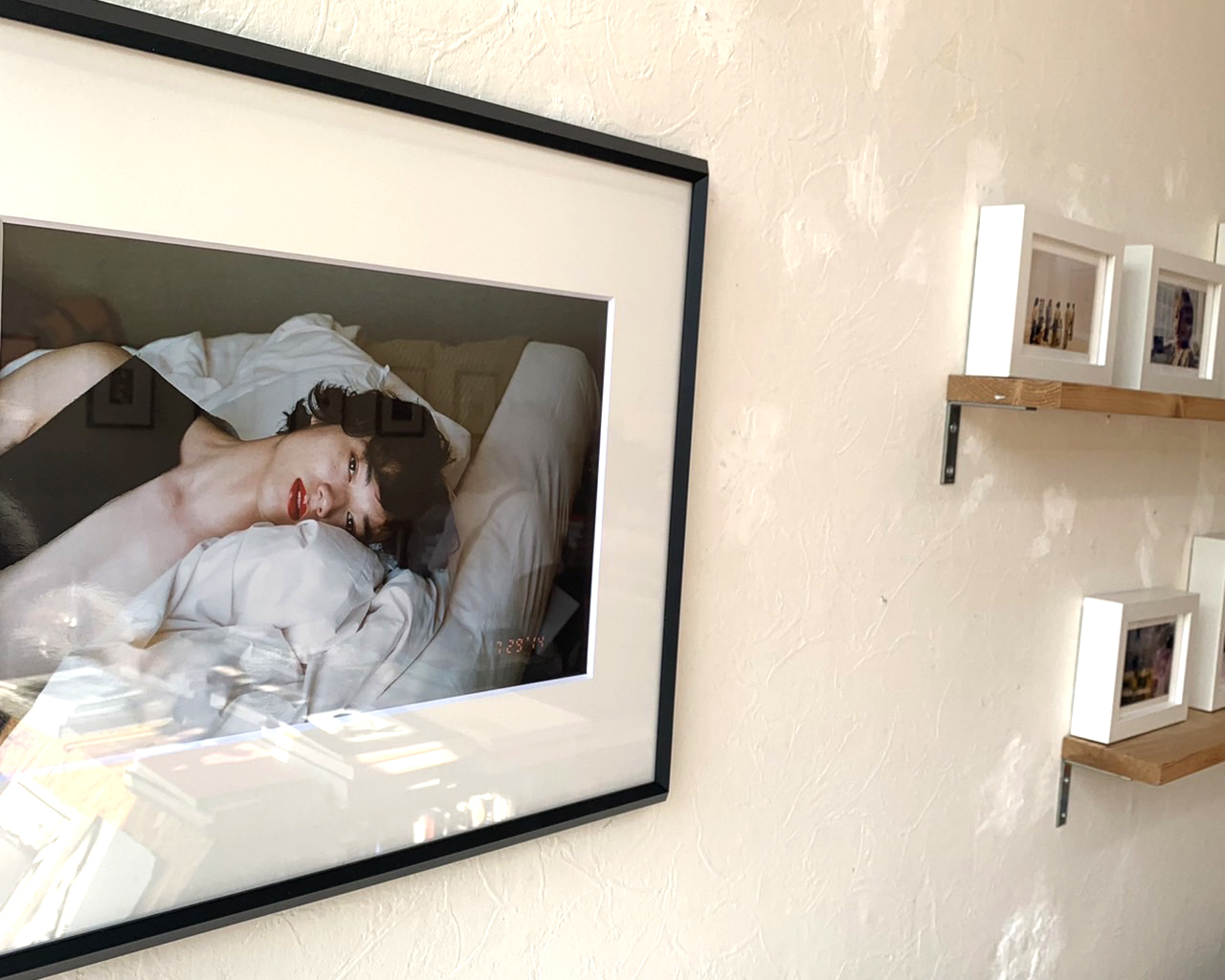
I think Suzuki is on to something by “legitimizing” these old, once-common, cheap little prints the way he has. In a world where nearly 200 million photos are taken every hour, I think that the value for individual images resides mostly in the eyes and mind of the one who took them. What makes one picture more than any other? What makes a re-discovered snapshot from twenty years ago worthy of contemplation and an audience in 2022? I guess that for some of us, a picture on paper is still more oddly “proper” to the heart than the invisible data sets we send swirling through wi-fi which present themselves on smartphone screens.
A few final thoughts on this show: the venue. Suzuki’s love for prints and paper and film made for an absolutely perfect match for flotsam books.
Flotsam, located near Tokyo’s “Okinawa Town” in Daitabashi, is a specialty photo and art bookshop run by Takayuki Kobayashi, a genuine Tokyo art book legend.
“flotsam” is an apt name- rather than careful organization, the books (mostly by foreign photographers & publishers) are set in piles or in loose rows on waist-level shelves. The feeling is closer to a used book fair or flea market than it is a regular bookstore. After you’ve flipped through a book, you can put it back down anywhere you like. This sort of mish-mash of publications and cover designs heightens that latent hunter-gatherer thrill of discovery that comes with pure browsing.
Of course, on the shop’s website you’ll find an easy-to-check and current inventory for online orders - but a visit to the shop encourages you to discover something new. The experience is probably most comparable to an old-school record store- one complete with an owner who, after seeing what you’ve picked up, kindly offers knowledge on that title and suggestions on what else you might be interested in. No algorithms here- paper and chance (and Kobayashi’s expertise and charm) rule.
So like I said- part of my trip to the shop was to get a copy of Suzuki’s new book, “New Tokyo ''. Unfortunately, the first batch of copies had sold out before I was able to stop by- but I don’t mind. This gives me a chance to stop by flotsam again real soon. I can’t wait.
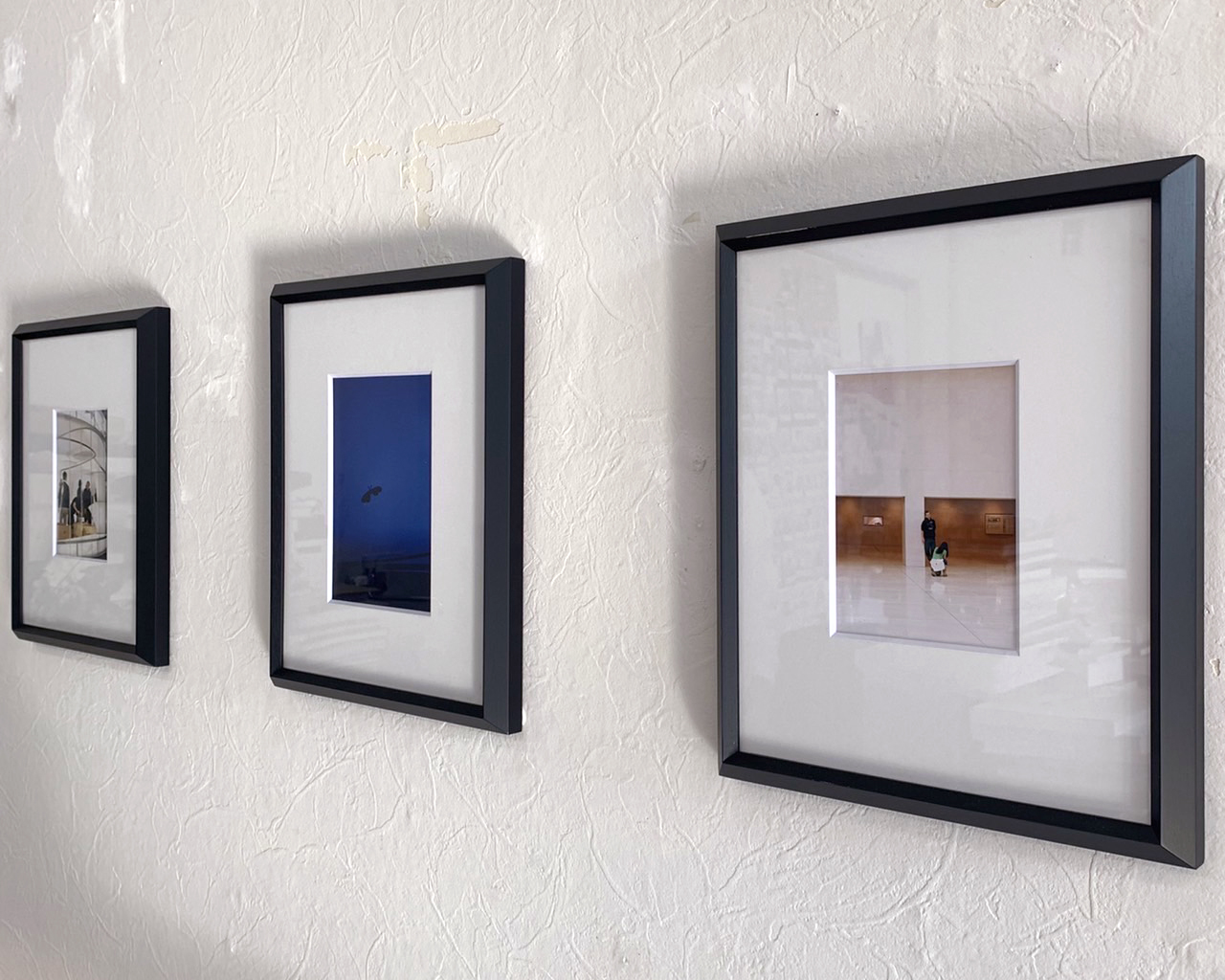
1990年代から世界中のファッション誌やカルチャー誌に作品を発表している写真家の鈴木親。4月に東京・代田橋のflotsam booksで開催した個展「体(たい)と用(ゆう)」のステートメントには、紙&写真についてこう書かれていました。
- データが印画紙の代わりに写真と呼ばれるようになったのはいつからだろうか。iPhone登場以前のカメラ機能の付いた携帯電話の登場で写真がデータとして頭の上を飛ぶようになったのが始まりだろうか。それ以前は必ず撮影したものは紙と一体になって写真と呼ばれてた。 プリントの見本として焼かれたサービスプリントを整理している時にそんなことを考えながら、flotsamの展示を決めた。
- 世界堂やIKEAの安い額装だが、紙の写真として額が付くことで廉価版として扱われたサービスプリントが本来の写真らしくなった。
- 映画の登場からずっと終わったと言われてきた写真だが、立場を変えしぶとく生き残ってこれたのは紙という物質化したことで多少の永遠性を手に入れたからかもしれない。
スタジオやストリートでモデルを起用しても、鈴木さんの写真にはパンチの効いた自然体がある。 デジタル、あるいは「データ」の時代前から撮影を続け、フィルム写真への揺るぎない敬意を持ち続けている。彼の作品にしばしば登場する日付スタンプやフレーム、ハーフフレーム使用は、写真の楽しみを増幅させている。flotsam booksのinstagramアカウントで、新刊の発売と展示のお知らせを見て、flotsam booksへと足を運びました。
「体(たい)と用(ゆう)」というタイトルも遊び心があって、2番目の漢字の「用(ゆう)」が「あなた(you)」と読めるのは、鈴木さんが被写体や鑑賞者とのつながりを認めているように感じられます。写真はもちろん一人で撮れて一人で見えるものですが、やっぱりその「you」がいればもっと深く感じられるのではないでしょうか。
ステートメントにあるように、この写真展はDPEのサービスプリントをマット加工し、安いIKEAのフレームに入れたものを中心に構成されていました。いくつかのプリントは乱暴に扱われたことによるシワさえ見られました。これは文句ではなく誉め言葉です。プリントを扱って、使われ、楽しまれ、生活の一部であったという証拠です。「生活の一部」であることはイメージの内容と同じくらい重要です。内容は、コマーシャル撮影場やストリートでの日常生活の流れの中で、美しいと感じた瞬間を衝動的に切り取ったものでした。
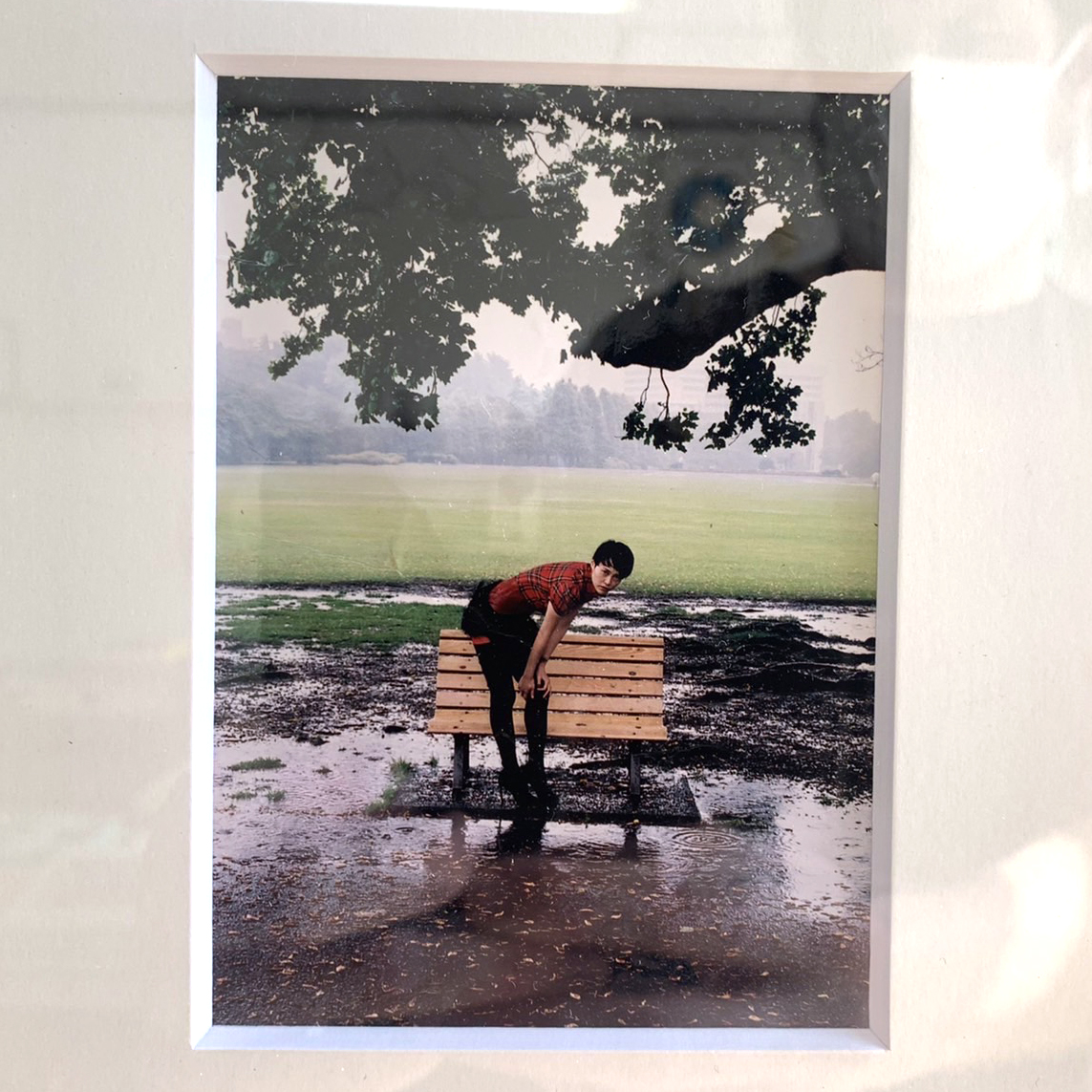
かつては一般的だった、安価で小さなプリントを「正統化」することで、鈴木さんは何か面白いことをやっていると思います。現在、世界では1時間に2億枚近い写真が撮られると言われています。写真はあまりにもありすぎて、やっぱり写真の価値は、それを撮った人の目と心の中にあると思うのです。一枚の写真が他のどの写真よりも優れているのはなぜでしょうか。しかも20年前のスナップショットが2022年に再発見され、観客を魅了するのはなぜでしょうか。携帯でスナップしてWi-Fiですぐには目に見えないデータで送られるよりも、紙の上の写真の方が、まだ妙に心にしっくりくる人がいるのではないでしょうか。
最後に、この展覧会について話したいです。 鈴木さんの「写真」「紙」「フィルム」に対する愛は、flotsam booksと完璧にマッチしていました。
東京の「沖縄タウン」代田橋にあるflotsam booksは、生粋の東京アートブック界のレジェンド、小林孝行氏が運営する写真とアートの専門書店です。
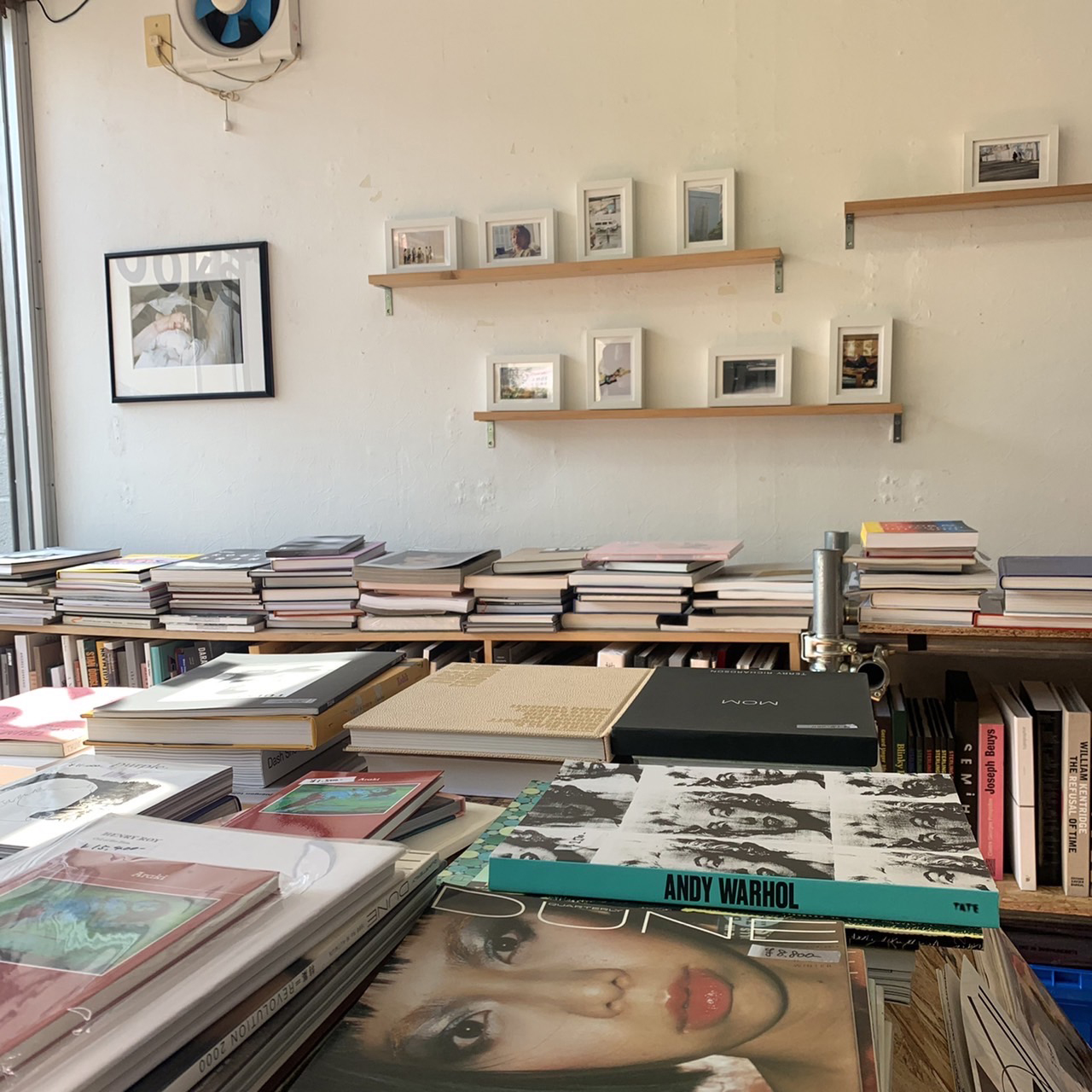
flotsam(漂流物)という名にふさわしく、海外の写真家や出版社の本が、腰の高さの棚に山積みに、あるいはちょうどよく乱雑に並べられています。「本屋」というより、古本市やフリーマーケットに近い感覚。気に入った本をパラパラとめくった後は、好きなところに戻しておくことができる。 出版物も表紙のデザインも、このように雑多であることが、純粋に立ち読みすることで得られる狩猟採集民の潜在的な発見というスリルを高めてくれるのです。
もちろん、ショップのウェブサイトでは、最新の在庫を簡単にチェックでき、オンライン注文も可能ですが、ショップに足を運ぶことで、新たな発見をすることができます。昔ながらのレコード店のようなものです。店主はお客さんが手に取ったレコードを見た後、そのタイトルに関する知識を親切に教えてくれたり、他にどんなものに興味があるかを提案してくれたりするのです。
アルゴリズムではなく、紙と偶然さ(そして小林さんの専門知識)がこの店の魅力なのです!
そう、今回は鈴木さんの写真集『新東京』を手に入れようとしていたのだけど、残念ながら、初回入荷分はすでに完売していました。でも問題ないです。だって、flotsam booksへ行くきっかけができたから。楽しみ。
- 鈴木親「体(たい)と用(ゆう)」
- 2022年4月15日(金)~24日(日)
- 会場:flotsam books
- 東京都杉並区和泉1-10-8
- 14:00~20:00 (水曜定休)
- WEB:https://www.flotsambooks.com/
- 鈴木親 WEB:https://chikashisuzuki.net/
 Vol.41 中嶋琉平|Ryuhei Nakashima「Asia, New York, and Tokyo」、高地二郎|Jiro Kochi「GINZA: Through the eye of a Salaryman 1950-1990」
2025/11/08
Vol.41 中嶋琉平|Ryuhei Nakashima「Asia, New York, and Tokyo」、高地二郎|Jiro Kochi「GINZA: Through the eye of a Salaryman 1950-1990」
2025/11/08
 Vol.40 藤岡亜弥|Aya Fujioka「Life Studies」、荒木塁|Lui Araki 「Color/Scape」
2025/10/03
Vol.40 藤岡亜弥|Aya Fujioka「Life Studies」、荒木塁|Lui Araki 「Color/Scape」
2025/10/03
 Vol.39 榎本八千代|Yachio Enomoto「家族写真 / Family Photo」
2025/09/05
Vol.39 榎本八千代|Yachio Enomoto「家族写真 / Family Photo」
2025/09/05
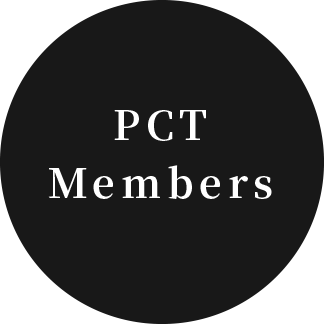
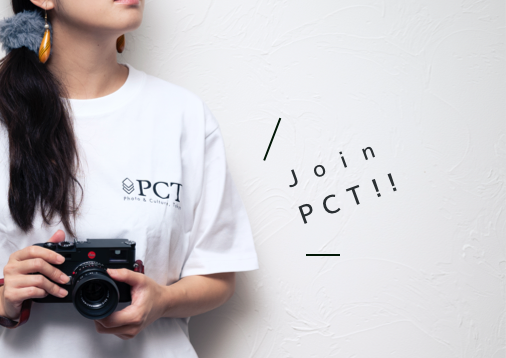
PCT Membersは、Photo & Culture, Tokyoのウェブ会員制度です。
ご登録いただくと、最新の記事更新情報・ニュースをメールマガジンでお届け、また会員限定の読者プレゼントなども実施します。
今後はさらにサービスの拡充をはかり、より魅力的でお得な内容をご提供していく予定です。
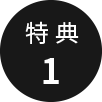 「Photo & Culture, Tokyo」最新の更新情報や、ニュースなどをお届けメールマガジンのお届け
「Photo & Culture, Tokyo」最新の更新情報や、ニュースなどをお届けメールマガジンのお届け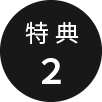 書籍、写真グッズなど会員限定の読者プレゼントを実施会員限定プレゼント
書籍、写真グッズなど会員限定の読者プレゼントを実施会員限定プレゼント